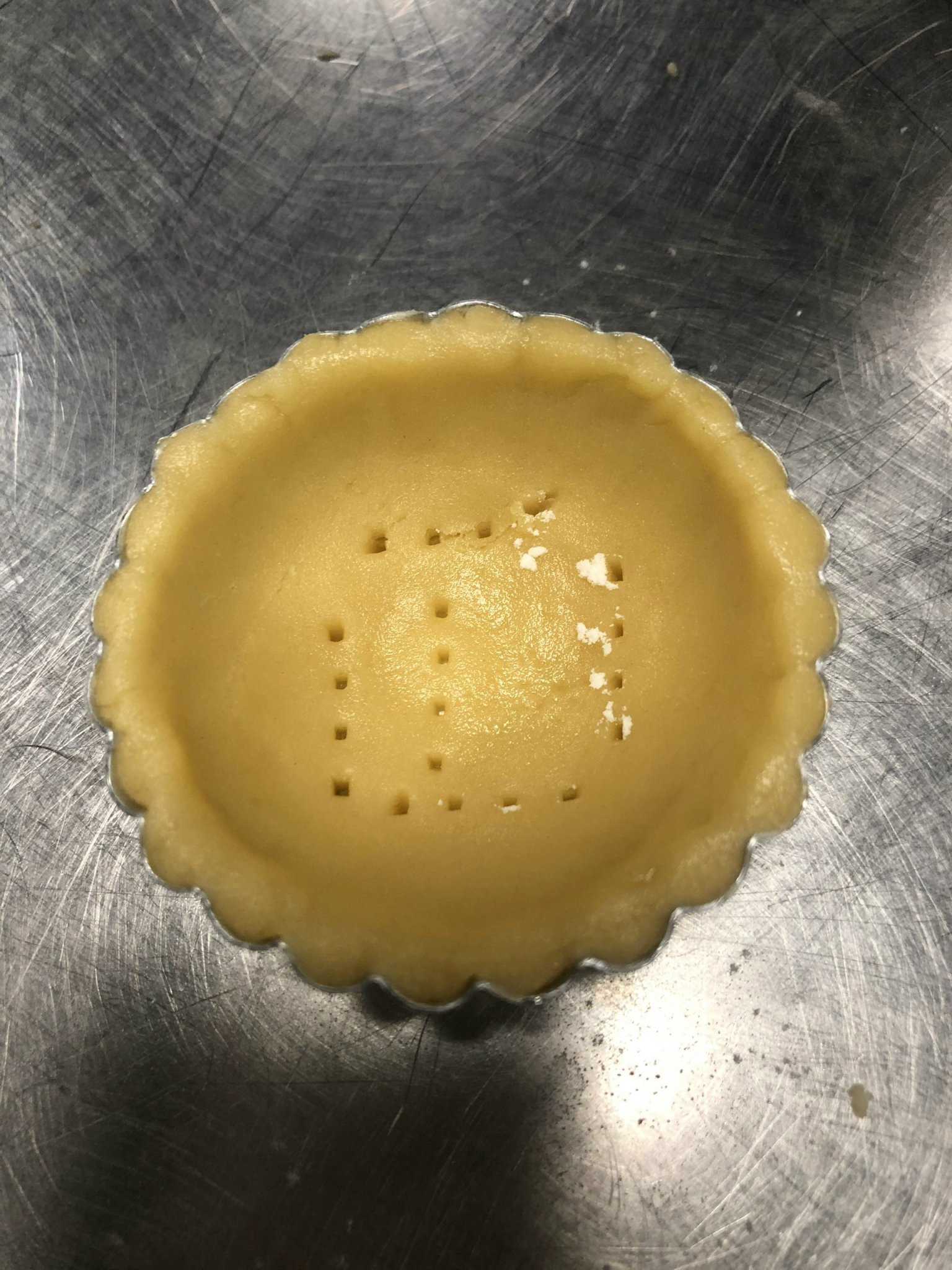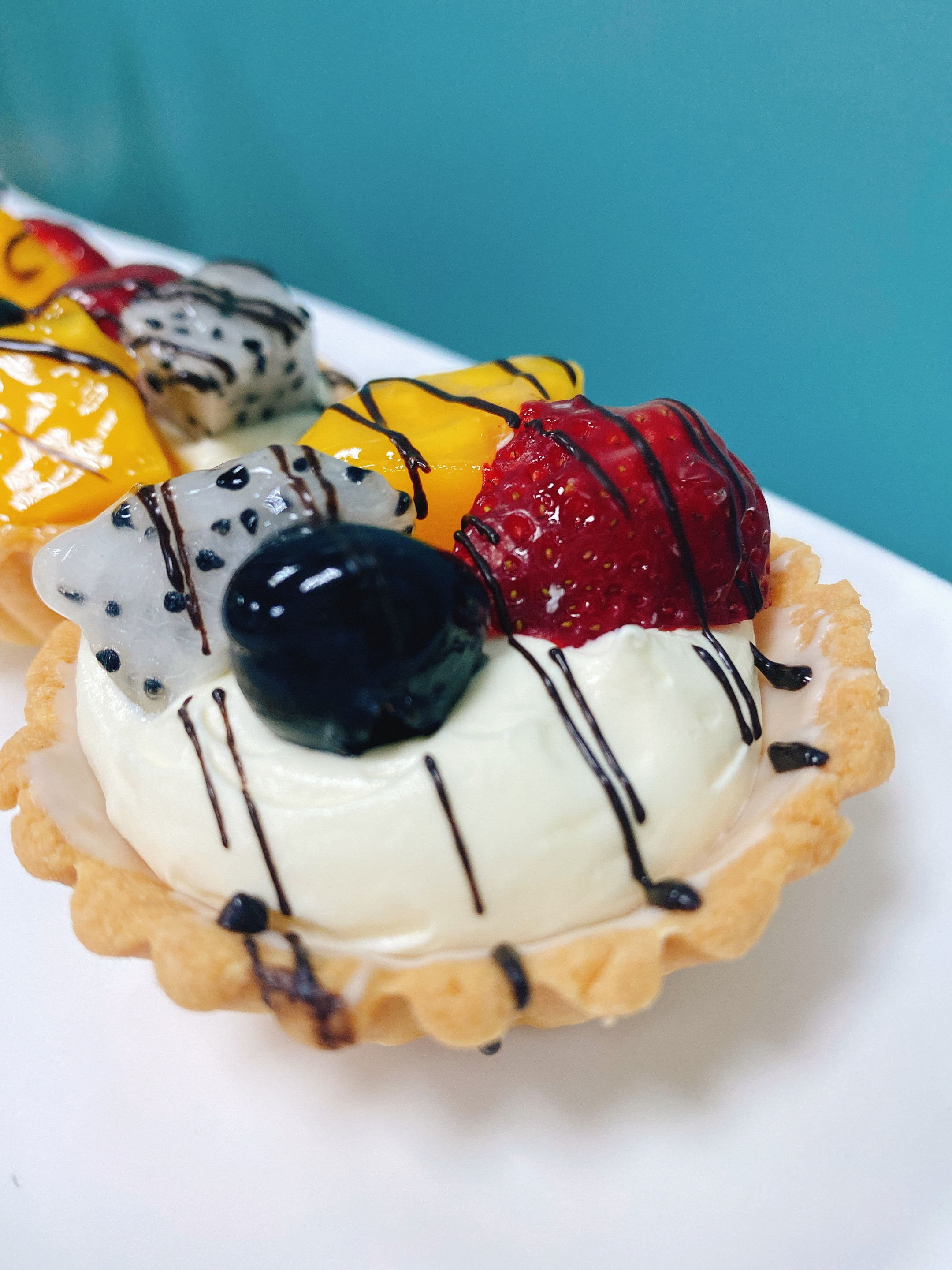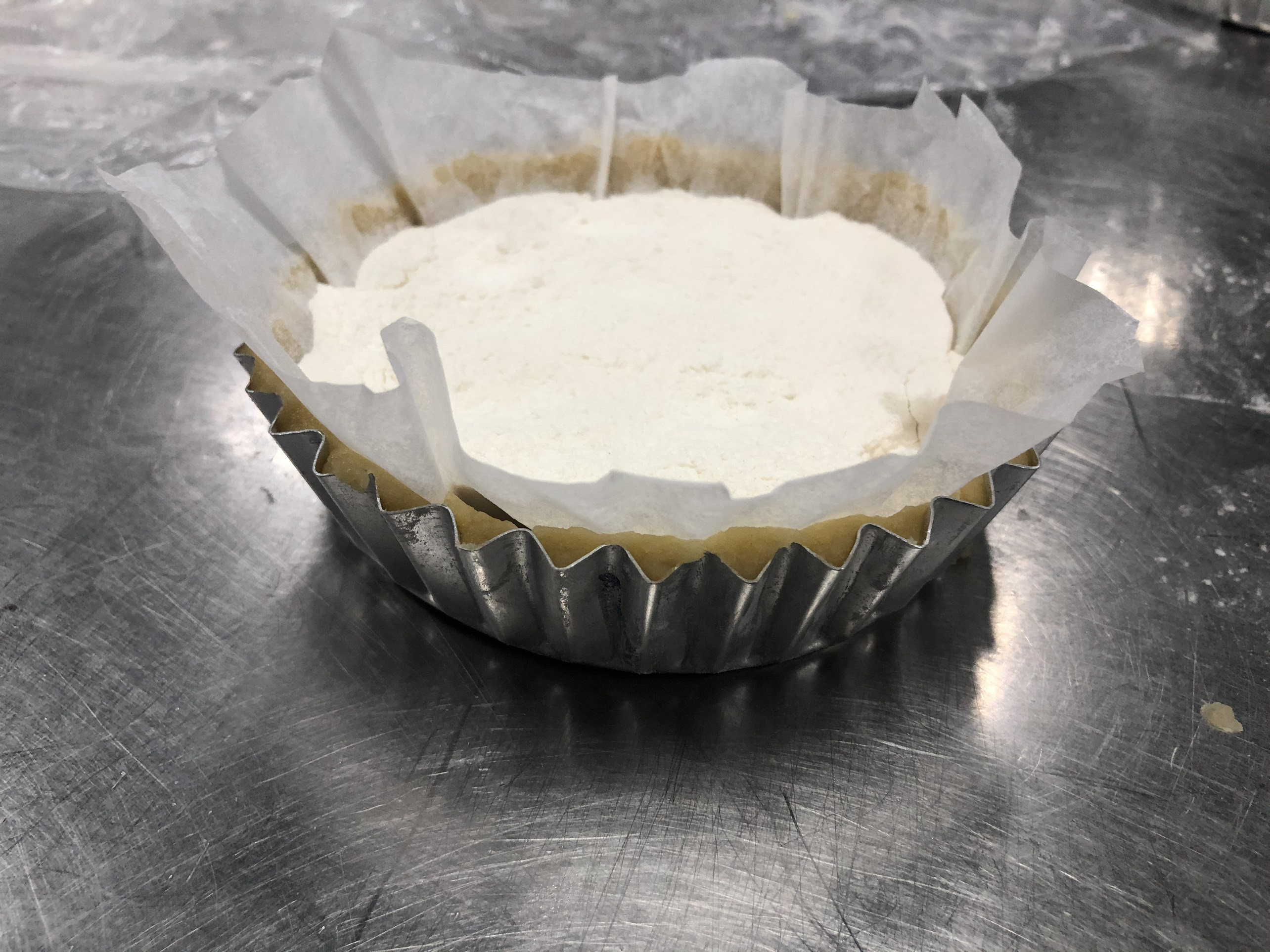Bake, a cornerstone of culinary arts, is the process of cooking food in an oven using dry heat, and at balocco.net, we’re passionate about helping you master this essential technique. From understanding baking basics to exploring advanced bread-making skills, we’ll equip you with the knowledge to confidently create delicious treats. Let’s dive into a world of baking know-how, baking tips, and pastry expertise.
1. What Exactly Is Baking? Unveiling The Fundamentals
Baking involves cooking food in an oven using prolonged dry heat. According to the Culinary Institute of America, baking transforms ingredients through heat, creating unique flavors and textures. During baking, heat causes chemical reactions, such as the Maillard reaction and caramelization, which enhance the taste and appearance of baked goods. This method is used for a wide range of foods, from bread and cakes to pastries and casseroles. Baking relies on a precise combination of ingredients and controlled temperatures to achieve the desired result.
1.1 The Science Behind Baking
The magic of baking lies in understanding the scientific principles at play. When heat is applied to a mixture of flour, sugar, and eggs, several transformations occur. Proteins denature, starches gelatinize, and gases expand, resulting in the rise and structure of baked goods.
1.2 Key Ingredients in Baking and Their Roles
Here’s a breakdown of essential baking ingredients and their functions:
| Ingredient | Role | Example Usage |
|---|---|---|
| Flour | Provides structure and texture, forms gluten when mixed with water. | Bread, cakes, pastries |
| Sugar | Adds sweetness, moisture, and aids in browning. | Cookies, cakes, desserts |
| Eggs | Provide moisture, richness, structure, and emulsification. | Cakes, custards, meringues |
| Fat | Adds flavor, tenderness, and moisture. | Cookies, pastries, cakes |
| Liquid | Hydrates dry ingredients and activates leavening agents. | Bread, cakes, muffins |
| Leavening | Causes baked goods to rise, creating a light and airy texture (baking soda, baking powder). | Cakes, muffins, scones |



Understanding how each ingredient interacts is crucial for achieving baking success. For instance, according to “On Food and Cooking” by Harold McGee, the balance between flour and liquid determines the consistency of the batter or dough and, ultimately, the texture of the final product.
1.3 Essential Baking Tools You Need
To start your baking journey, equip yourself with these essential tools:
- Measuring Cups and Spoons: Accurate measurements are crucial in baking.
- Mixing Bowls: A set of various sizes for different tasks.
- Whisks and Spatulas: For mixing and folding ingredients.
- Baking Pans: Choose the right size and material for your recipe.
- Oven Thermometer: Ensure your oven is at the correct temperature.
- Rolling Pin: For rolling out doughs and pastries.
2. Baking vs. Cooking: What Are The Distinctions?
While both baking and cooking involve preparing food with heat, they differ significantly. Baking typically involves dry heat in an oven and precise measurements, whereas cooking encompasses various methods like boiling, frying, and steaming. Baking requires a more scientific approach, as the ratios of ingredients directly impact the final product’s texture and structure. Cooking, on the other hand, often allows for more improvisation and adjustments during the process.
2.1 Key Differences in Techniques
| Feature | Baking | Cooking |
|---|---|---|
| Heat Source | Dry heat (oven) | Various (boiling, frying, steaming) |
| Precision | High (accurate measurements crucial) | Lower (adjustments can be made during cooking) |
| End Result | Specific texture and structure | Broader range of textures and flavors |
| Common Foods | Bread, cakes, pastries | Soups, stews, stir-fries |
2.2 Understanding the Importance of Precision in Baking
In baking, exact measurements are key because chemical reactions are highly dependent on the proportions of ingredients. A slight change in the amount of flour, sugar, or leavening agent can drastically alter the texture, rise, and overall outcome of the baked product. Precision ensures consistency and predictability in your results.
2.3 Flexibility and Adjustments in Cooking
Cooking allows for more flexibility and improvisation. You can adjust seasoning, add ingredients, or modify cooking times to suit your taste and the available ingredients. This adaptability makes cooking a more forgiving process compared to the precision required in baking.
3. Why Is Baking So Popular? Exploring The Benefits
Baking’s popularity stems from its numerous benefits, including the joy of creating homemade treats, the satisfaction of mastering a skill, and the ability to customize flavors and ingredients. Homemade baked goods often taste better and are healthier than store-bought options, as you have control over the ingredients used.
3.1 The Joy of Creating Homemade Treats
There’s a unique satisfaction in baking something from scratch and sharing it with loved ones. The aroma of freshly baked bread or cookies filling your home creates a warm and inviting atmosphere. Baking provides a creative outlet and a sense of accomplishment.
3.2 Customizing Flavors and Ingredients
Baking allows you to tailor recipes to your dietary needs and preferences. Whether you’re gluten-free, vegan, or simply want to experiment with different flavors, baking gives you the freedom to create personalized treats. At balocco.net, you’ll find a wide range of recipes to suit various tastes and dietary restrictions.
3.3 Health Benefits of Baking at Home
When you bake at home, you control the quality and quantity of ingredients, reducing preservatives, additives, and excessive sugar or fats. Baking with whole grains, natural sweeteners, and healthy fats can make your treats more nutritious and beneficial for your health.
4. Types of Baking: A Comprehensive Overview
Baking encompasses various techniques, each suited for different types of foods. Understanding these methods can help you choose the right approach for your recipes and achieve the best results.
4.1 Bread Baking: The Art of Making Loaves
Bread baking is a fundamental aspect of baking, involving the fermentation of dough to create a variety of loaves. The process typically includes mixing, kneading, proofing, and baking. Key elements include yeast activation, gluten development, and precise temperature control. According to Peter Reinhart, author of “Bread Baker’s Apprentice,” mastering bread baking requires patience, practice, and a good understanding of dough behavior.
4.2 Cake Baking: Creating Sweet Delights
Cake baking involves combining ingredients to create a batter that rises during baking, resulting in a soft, moist, and flavorful dessert. Different types of cakes, such as sponge cakes, butter cakes, and chiffon cakes, require specific techniques and ingredient ratios. Achieving the right texture and crumb is essential for a perfect cake.
4.3 Pastry Baking: Mastering Flaky Goodness
Pastry baking focuses on creating flaky, buttery, and tender crusts for pies, tarts, and other desserts. The key to successful pastry is keeping the ingredients cold and minimizing gluten development. Techniques like lamination, used in croissants and puff pastry, create multiple layers of dough and butter, resulting in an incredibly light and airy texture.
4.4 Cookie Baking: Simple and Satisfying Treats
Cookie baking is a versatile and accessible form of baking, perfect for beginners and experienced bakers alike. From crispy and chewy to soft and cakey, cookies come in countless variations. Key factors include controlling the spread, achieving the right texture, and adding flavorful inclusions like chocolate chips, nuts, or spices.
5. How Does Baking Work? Step-by-Step Guide
Baking involves several key steps that transform raw ingredients into delicious treats. From mixing to baking, each stage plays a crucial role in the final outcome.
5.1 Mixing Techniques: Achieving the Right Consistency
Different recipes require different mixing techniques to achieve the desired consistency. Common methods include:
- Creaming: Combining butter and sugar until light and fluffy.
- Whisking: Incorporating air into eggs or liquids to create volume.
- Folding: Gently combining delicate ingredients to avoid deflating the mixture.
- Kneading: Developing gluten in bread dough for structure and elasticity.
5.2 Temperature Control: The Key to Even Baking
Maintaining the correct oven temperature is essential for even baking. Too high, and your baked goods may burn on the outside while remaining raw inside. Too low, and they may be dry and dense. Use an oven thermometer to ensure accuracy and adjust as needed.
5.3 Cooling and Storing Baked Goods Properly
Proper cooling and storage are crucial for preserving the texture and flavor of your baked goods. Allow cakes, cookies, and pastries to cool completely before storing them in airtight containers. Bread should be stored in a breadbox or wrapped tightly in plastic to prevent it from drying out.
6. Common Baking Mistakes And How To Avoid Them
Even experienced bakers make mistakes. Knowing the common pitfalls and how to avoid them can save you time and frustration.
6.1 Inaccurate Measurements: The Importance of Precision
Using incorrect measurements is a common mistake that can lead to disastrous results. Always use measuring cups and spoons correctly, and level off dry ingredients for accuracy.
6.2 Overmixing or Undermixing: Finding the Right Balance
Overmixing can develop too much gluten, resulting in tough baked goods. Undermixing can leave lumps of dry ingredients, affecting the texture and rise. Mix until just combined for most recipes.
6.3 Incorrect Oven Temperature: Ensuring Consistent Results
Baking at the wrong temperature can cause uneven baking, burning, or undercooked centers. Use an oven thermometer to verify the temperature and adjust as needed.
6.4 Not Following the Recipe: The Need for Guidance
While improvisation can be fun, following the recipe is essential, especially for beginners. Baking relies on precise ingredient ratios and techniques, so stick to the instructions for best results.
7. Advanced Baking Techniques To Elevate Your Skills
Once you’ve mastered the basics, you can explore advanced techniques to take your baking skills to the next level.
7.1 Sourdough Baking: Cultivating Natural Leavening
Sourdough baking involves using a natural starter (a fermented mixture of flour and water) instead of commercial yeast. This technique requires patience and attention to detail, but the resulting bread has a complex flavor and satisfying chew.
7.2 Lamination: Creating Layered Pastries
Lamination is the process of creating layers of dough and butter, as seen in croissants and puff pastry. This technique requires precision and cold temperatures, but the result is a light, airy, and incredibly flaky pastry.
7.3 Sugar Work: The Art of Decoration
Sugar work involves creating intricate decorations from sugar, such as spun sugar, pulled sugar, and sugar sculptures. This technique requires specialized tools and skills, but the results can be stunning.
7.4 Chocolate Tempering: Achieving Glossy Perfection
Tempering chocolate involves heating and cooling it to specific temperatures to stabilize the cocoa butter crystals. This technique is essential for creating glossy, smooth, and snap-resistant chocolate for candies, decorations, and coatings.
8. Baking for Dietary Needs: Gluten-Free, Vegan, and More
Baking can be adapted to various dietary needs, allowing everyone to enjoy delicious homemade treats.
8.1 Gluten-Free Baking: Using Alternative Flours
Gluten-free baking involves using alternative flours, such as almond flour, rice flour, and tapioca starch, to replace wheat flour. These flours lack gluten, which provides structure in traditional baking, so it’s essential to use binding agents like xanthan gum or psyllium husk.
8.2 Vegan Baking: Replacing Animal Products
Vegan baking replaces animal products like eggs, milk, and butter with plant-based alternatives. Flax eggs, aquafaba (chickpea brine), and plant-based milks and butters are common substitutes.
8.3 Low-Sugar Baking: Natural Sweeteners and Alternatives
Low-sugar baking involves using natural sweeteners like honey, maple syrup, or stevia instead of refined sugar. It’s important to adjust the liquid content and other ingredients to maintain the texture and moisture of the baked goods.
9. Baking Around the World: Exploring Global Traditions
Baking traditions vary widely around the world, each with unique techniques, ingredients, and flavors.
9.1 French Pastries: Delicate and Decadent
French pastries are renowned for their delicate flavors, intricate designs, and high-quality ingredients. Croissants, macarons, and éclairs are just a few examples of the exquisite treats that define French baking.
9.2 Italian Breads and Cakes: Rustic and Hearty
Italian baking features rustic breads like ciabatta and focaccia, as well as hearty cakes like panettone and biscotti. These baked goods often incorporate olive oil, herbs, and nuts for a distinctive flavor.
9.3 American Classics: From Cookies to Pies
American baking is known for its comforting classics like chocolate chip cookies, apple pie, and brownies. These treats often use simple ingredients and straightforward techniques, making them accessible to home bakers.
9.4 Asian Breads and Pastries: Unique Textures and Flavors
Asian baking features unique textures and flavors, often incorporating ingredients like rice flour, sweet bean paste, and matcha. Japanese milk bread, Korean honey bread, and Chinese mooncakes are just a few examples of the diverse and delicious baked goods from Asia.
10. Baking Trends in the USA: What’s Hot Right Now?
The baking scene in the USA is constantly evolving, with new trends and innovations emerging regularly.
| Trend | Description |
|---|---|
| Artisan Breads | Focus on handcrafted, high-quality breads made with natural ingredients and traditional techniques. |
| Plant-Based Baking | Growing demand for vegan and vegetarian baked goods, using plant-based alternatives and sustainable ingredients. |
| Global Flavors | Incorporation of international flavors and ingredients, such as matcha, cardamom, and yuzu, into baked goods. |
| Nostalgic Desserts | Revival of classic desserts like retro cakes, pies, and cookies, often with a modern twist. |
| Home Baking Kits | Popularity of DIY baking kits that provide pre-measured ingredients and step-by-step instructions for home bakers. |
Stay updated with the latest baking trends at balocco.net, where we constantly feature innovative recipes and techniques.
11. Resources for Bakers: Websites, Books, and Courses
To enhance your baking skills, explore these valuable resources:
- Websites:
- balocco.net: A comprehensive resource for recipes, techniques, and baking tips.
- King Arthur Baking: Offers a wide range of recipes, tutorials, and baking advice.
- Sally’s Baking Addiction: Features easy-to-follow recipes and helpful tips for home bakers.
- Books:
- “The Bread Baker’s Apprentice” by Peter Reinhart: A comprehensive guide to bread baking.
- “Baking Illustrated” by Cook’s Illustrated: Provides detailed explanations and step-by-step instructions for various baking techniques.
- “Tartine Bread” by Chad Robertson: Explores the art of sourdough baking.
- Courses:
- Culinary Institute of America: Offers professional baking and pastry programs.
- Online baking classes on platforms like Skillshare and Udemy: Provides flexible and accessible learning options.
12. Baking and Mental Health: The Therapeutic Benefits
Baking offers numerous therapeutic benefits, promoting relaxation, creativity, and mindfulness. The repetitive motions involved in mixing and kneading can be calming, while the act of creating something delicious can boost your mood and self-esteem.
12.1 Stress Relief and Relaxation
Baking can be a great way to unwind and relieve stress. Focusing on the task at hand can help you forget about your worries and immerse yourself in the present moment.
12.2 Enhancing Creativity and Self-Esteem
Baking provides a creative outlet and a sense of accomplishment. Experimenting with new recipes, decorating cakes, and sharing your creations with others can boost your confidence and self-esteem.
12.3 Mindfulness and Focus
Baking requires attention to detail and focus, promoting mindfulness and concentration. This can help you develop better focus and reduce distractions in other areas of your life.
13. Famous Bakers and Their Impact on the Industry
Several influential bakers have shaped the baking industry with their innovative techniques, iconic recipes, and dedication to quality.
13.1 Julia Child: Bringing French Baking to America
Julia Child popularized French cuisine in America through her cookbook “Mastering the Art of French Cooking” and her television show “The French Chef.” Her accessible and enthusiastic approach inspired countless home bakers to try their hand at classic French pastries.
13.2 Paul Hollywood: The Star of British Baking
Paul Hollywood is a renowned British baker and judge on “The Great British Bake Off.” His expertise in bread baking and his no-nonsense approach have made him a household name in the baking world.
13.3 Joanne Chang: A Pioneer in Pastry Arts
Joanne Chang is a celebrated pastry chef and owner of Flour Bakery + Cafe in Boston. Her innovative pastries and her commitment to quality have earned her numerous awards and accolades.
13.4 Dominique Ansel: The Inventor of the Cronut
Dominique Ansel is a French pastry chef best known for inventing the Cronut, a croissant-doughnut hybrid that took the world by storm. His innovative creations and his dedication to pushing the boundaries of pastry have made him a leading figure in the baking industry.
14. Baking as a Business: Turning Your Passion Into Profit
If you’re passionate about baking, you can turn your hobby into a successful business.
14.1 Starting a Home-Based Bakery
Starting a home-based bakery allows you to sell your baked goods directly to customers from your home kitchen. Check your local regulations and obtain any necessary permits or licenses.
14.2 Opening a Bakery or Cafe
Opening a bakery or cafe requires more investment and planning but offers greater potential for growth. Choose a good location, develop a menu, and create a welcoming atmosphere to attract customers.
14.3 Selling Baked Goods Online
Selling baked goods online allows you to reach a wider audience and operate with lower overhead costs. Set up an e-commerce website, package your products carefully, and ship them to customers across the country.
15. Exploring balocco.net: Your Ultimate Baking Resource
At balocco.net, we’re committed to providing you with the best baking resources, from easy-to-follow recipes to advanced techniques.
15.1 Recipe Collections: Diverse and Delicious
Our recipe collections feature a wide range of baked goods, from classic cakes and cookies to innovative pastries and breads. Whether you’re a beginner or an experienced baker, you’ll find something to inspire you.
15.2 Step-by-Step Tutorials: Mastering Techniques
Our step-by-step tutorials guide you through essential baking techniques, from kneading dough to tempering chocolate. With clear instructions and helpful tips, you’ll master new skills in no time.
15.3 Community Forum: Connecting with Fellow Bakers
Our community forum allows you to connect with fellow bakers, share your creations, ask questions, and get advice. Join our community and become part of a supportive and passionate baking network.
Are you ready to embark on a baking adventure? Visit balocco.net today to discover a world of delicious recipes, expert tips, and a community of fellow baking enthusiasts. Let’s bake the world a better place, one treat at a time. Contact us at Address: 175 W Jackson Blvd, Chicago, IL 60604, United States. Phone: +1 (312) 563-8200.
FAQ: Answering Your Burning Baking Questions
1. What does baking mean in culinary terms?
Baking refers to cooking food in an oven using dry heat. This process transforms raw ingredients into delicious treats by causing chemical reactions that create unique flavors and textures.
2. Why is baking considered an art and a science?
Baking is considered an art because it requires creativity, skill, and attention to detail to create visually appealing and delicious treats. It’s also a science because it relies on precise measurements and chemical reactions to achieve the desired results.
3. What are the basic ingredients needed for baking?
The basic ingredients for baking include flour, sugar, eggs, fat (butter or oil), liquid (milk or water), and a leavening agent (baking soda or baking powder).
4. How do I ensure even baking in my oven?
To ensure even baking, use an oven thermometer to verify the temperature, rotate your baked goods halfway through baking, and avoid opening the oven door frequently.
5. What is the difference between baking powder and baking soda?
Baking powder is a complete leavening agent that contains both an acid and a base, while baking soda requires an acidic ingredient (like lemon juice or buttermilk) to activate.
6. How do I prevent my cookies from spreading too much?
To prevent cookies from spreading too much, chill the dough before baking, use parchment paper on the baking sheet, and avoid over-greasing the pan.
7. What are some common substitutions for eggs in baking?
Common substitutions for eggs in baking include flax eggs (flaxseed meal mixed with water), applesauce, mashed banana, or commercial egg replacers.
8. How do I store baked goods to keep them fresh?
Store cakes, cookies, and pastries in airtight containers at room temperature. Bread should be stored in a breadbox or wrapped tightly in plastic to prevent it from drying out.
9. What are some tips for baking at high altitude?
When baking at high altitude, reduce the amount of leavening agent, increase the liquid content, and lower the oven temperature to prevent baked goods from rising too quickly and collapsing.
10. How can I learn more about baking techniques and recipes?
Explore websites like balocco.net, read baking books, take online baking classes, and join baking communities to learn new techniques and recipes.



